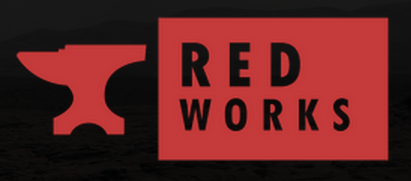RedWorks Envisions 3D Printed Housing on Mars, Inspired by Nautilus Shells & Pueblos
BY BRIDGET BUTLER MILLSAPS · AUGUST 25, 2015
 While many of us may envision a general idea of heading into space, prompted by decades of Star Trek and newer generations of sci-fi entertainment, those who are in the know realize it’s going to be all about tackling housing and self-sustainability first.
While many of us may envision a general idea of heading into space, prompted by decades of Star Trek and newer generations of sci-fi entertainment, those who are in the know realize it’s going to be all about tackling housing and self-sustainability first.
We can’t take everything we need in a rocket, and supplies take an awfully long time to get there afterward. There has to be a plan that unfolds once we arrive somewhere like Mars–and it means using what we find around us.
RedWorks is made up of a team of individuals with expertise in everything from aerospace engineering to geology, environmental management, manufacturing, and graphics. They’ve begun rounding out a comprehensive living plan for colonizing Mars, and it begins with the most simple–yet necessary–of materials: dirt.
3D printing and the exploration of space go hand in hand, and it’s one of those topics, sometimes faraway not only in miles but also reality, that we enjoy reporting on and thinking about. The potential for what we can do with 3D printing in space once we get there is nearly as vast as space itself, demonstrated here on Earth by the seemingly infinite amount of innovations and new directions in which we can go.
We’ve explored stories on everything so far from the famous landing of the first 3D printer at the ISS to many ideas and plans specific to Mars, such as solar powered 3D printers, the exploration of 3D printed drones, and fun ideas like 3D printing your own Mars rover–quite a popular idea, as NASA continues to extend the enthusiasm and education on the subject to the public.
RedWorks has done their homework in studying ancient civilizations and structures like pueblos, as well as harkening back to nature itself in looking at shells such as the nautilus for inspiration in design. Printing from remote locations and using the self-sustainability model doubles up on itself in the RedWorks concept, as they plan for excavating into the foundation of Mars and 3D printing up from there.
“This method effectively purposes the first ten meters of the construction site as a secondary shield to protect the bulk of the habitat from the elements it would otherwise be exposed to on the surface,” says the RedWorks team on their website.
 They have a detailed plan for using what is already there in terms of constructions materials and building, with “existing geological constructs” such as:
They have a detailed plan for using what is already there in terms of constructions materials and building, with “existing geological constructs” such as:- Lava tubes
- Crater rims
- Fossae
- Open pits
- Crevasses
Existing materials, working in tandem with specific algorithms designed by RedWorks, should work to make suitable, durable housing–as well as build up a protective barrier to deal with the considerable wind, radiation, and more, as they note:
“The Red Works initial architectural concept combined the structural benefits observed in the Fibonacci spiral pattern of a nautilus shell and the simple design of a pueblo, maximizing internal volume without exceeding the cap on the area of living space.”
As the project has continued, the RedWorks team has developed their concept and design further in terms of its surface profile and structure. The housing floor plan works on four levels, employing the shell and pueblo design, with an airlocking spaceship type door:
- Section one – area to house utilities for engineering maintenance of the habitat, as well as surface activities
- Section two – living and recreational areas, as well as kitchen
- Section three – geology and life-science lab
- Section four – ‘life-support level’ for waste reprocessing, emergency life support, and environmental control systems
 The RedWorks team, headquartered in California, has only one mission, and that’s to create sustainable housing in space. They’ve done a great deal of homework, and in embracing and harnessing the technology of 3D printing, they see a viable way to colonize the solar system, beginning with Mars.
The RedWorks team, headquartered in California, has only one mission, and that’s to create sustainable housing in space. They’ve done a great deal of homework, and in embracing and harnessing the technology of 3D printing, they see a viable way to colonize the solar system, beginning with Mars.
This is possible to consider due not only to the innovation allowed in digital design and 3D printing but the self-sustainability factor when printing in a remote–to say the least–location. All of the benefits that must be factored fall into line–reliability, affordability, and feasibility. The technology has passed proof-of-concept testing, allowing that its use in space is possible. There are those with big predictions, and there are still many skeptics. We have the technology, and it works. The rest is up to us.
How do you think 3D printing will expand our level of space exploration and colonization? Discuss in the 3D Printed Housing on Mars forum thread over at 3DPB.com.

No comments:
Post a Comment